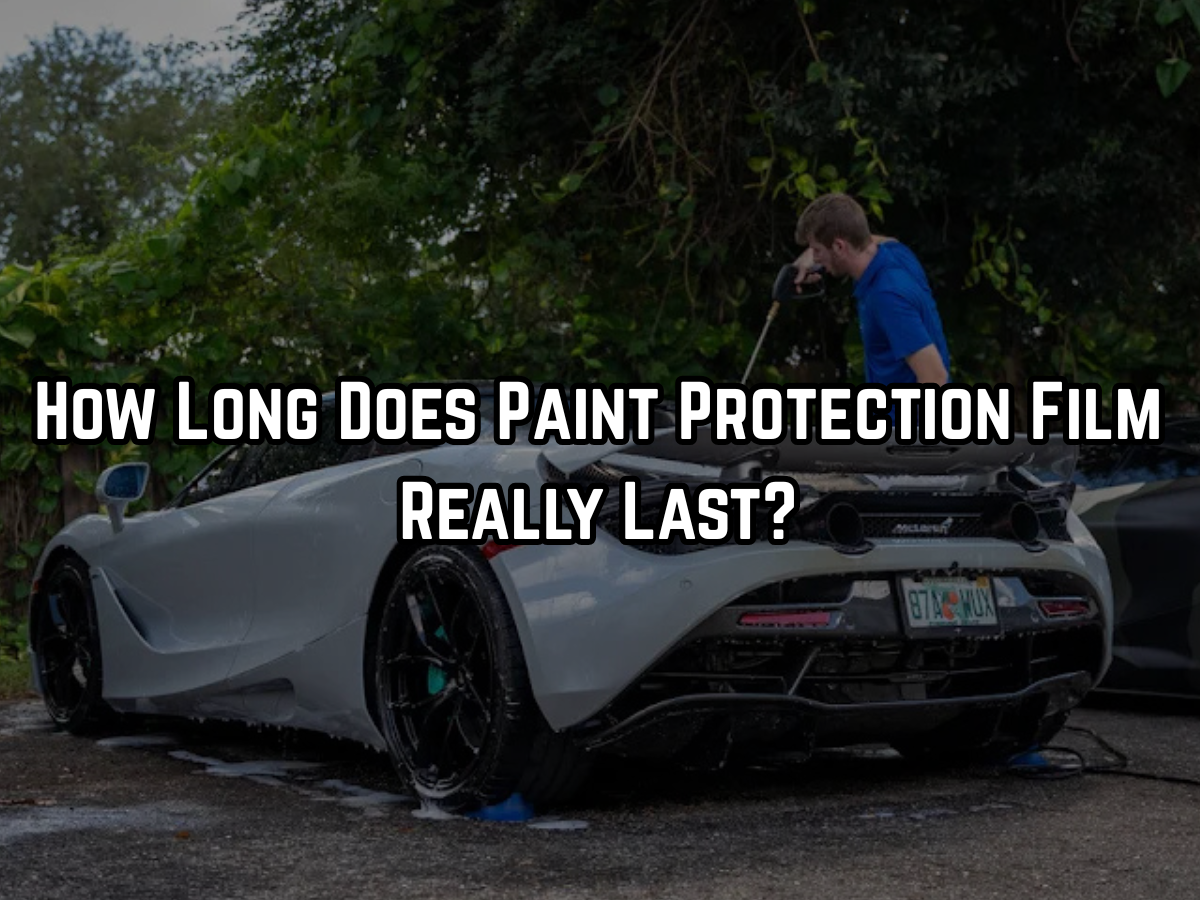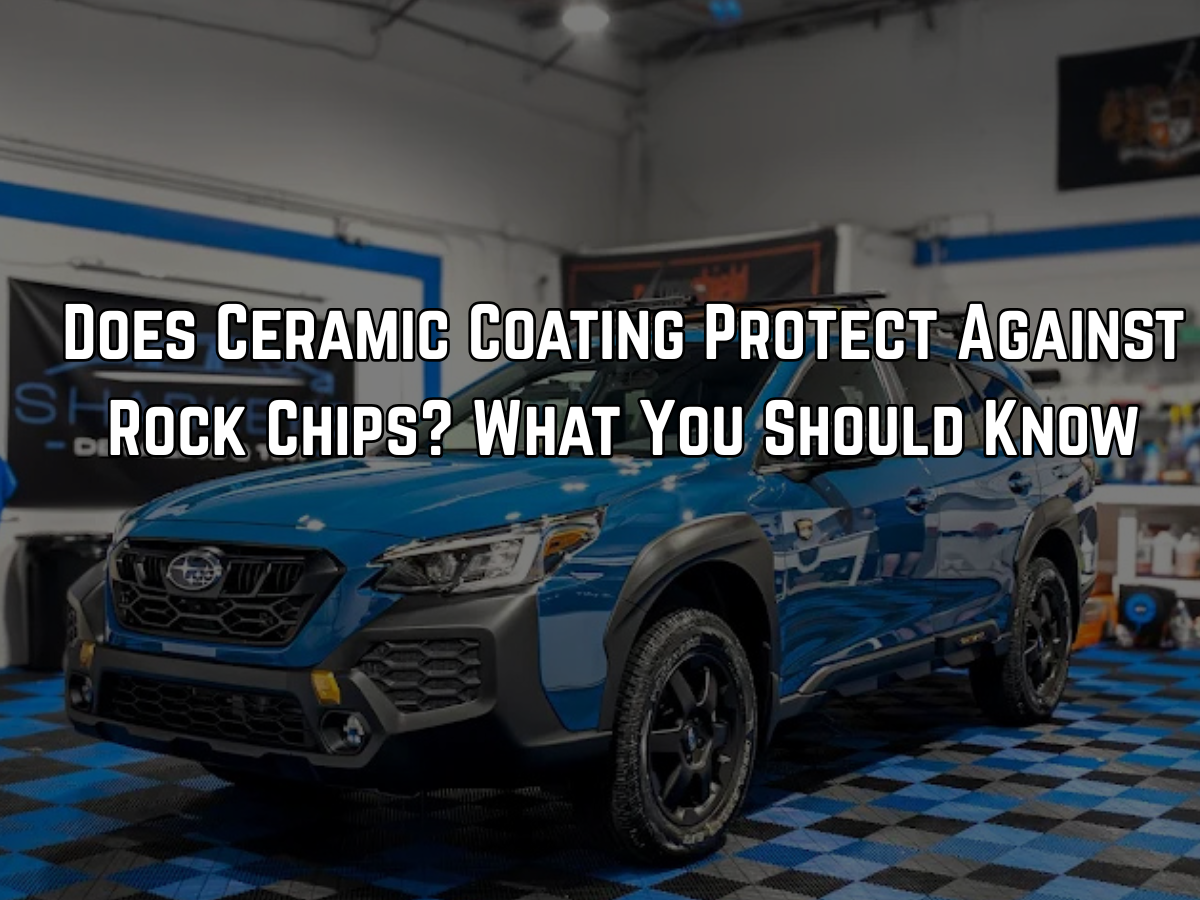Benefits of Ceramic Coating: What It Really Does for Your Car
If you’ve heard people talk about ceramic coating and wondered if it’s just hype, the short answer is: no, it’s not just hype.
Ceramic coating is one of the most advanced forms of paint protection available today. It gives your car a deep gloss, makes cleaning easier, and shields your paint from environmental damage. But it’s not a magic force field, and knowing what it does will help you decide if it’s right for your vehicle.
Key Takeaways
- Ceramic coating forms a semi-permanent layer on your car’s surface.
- It protects against UV rays, dirt, water, and minor chemical damage.
- It gives a long-lasting glossy finish that’s easy to clean.
- It’s not a replacement for paint protection film (PPF) or regular washing.
What Is Ceramic Coating?
Ceramic coating is a liquid polymer applied to the exterior of a vehicle. When it cures, it forms a chemical bond with the factory paint, creating a hydrophobic (water-repellent) layer.
This layer is typically made from silicon dioxide (SiO₂) or titanium dioxide (TiO₂), the same stuff used in glass, but engineered for flexible, durable protection on paint.
Benefits of Ceramic Coating for Your Car
Let’s break down the real-world advantages you’ll see with ceramic coating.
1. Protection Against UV Damage & Oxidation
Constant exposure to the sun leads to oxidation, which causes fading and dull paint.
Ceramic coating acts like a sunscreen for your car, blocking UV rays and helping retain the vehicle's original color and shine over time.
2. Hydrophobic Properties (Water Beads Right Off)
The biggest wow factor? Water doesn’t stick, it beads and rolls right off.
This effect helps:
- Prevent water spots
- Reduce dirt build-up
- Make washing your car easier
Hydrophobic coatings repel water, mud, and grime, so your car stays cleaner between washes.
3. Ease of Cleaning (Low Maintenance)
Ceramic coating doesn’t eliminate the need for washing, but it does make it easier.
Since dirt, brake dust, tree sap, and bug guts don’t bond as easily to the surface, they wipe off with less effort. That means fewer harsh scrubs that could scratch your paint.
4. Enhanced Gloss & Deep Shine
- One of the first things people notice after ceramic coating is the rich, reflective finish.
- It enhances the depth and clarity of your paint, whether it’s metallic, matte, or solid.
- Even older cars look noticeably newer after proper paint correction followed by a ceramic coating
5. Protection From Chemical Stains
Bird droppings, bug splatter, acid rain, and road salt can eat into clear coat and damage paint.
Ceramic coatings offer chemical resistance, reducing the risk of etching or staining. While they’re not bulletproof, they buy you time to safely clean off harmful substances.
6. Scratch Resistance (to a Point)
Ceramic coatings can resist micro-swirls and light abrasions, especially from washing. But don’t expect them to stop rock chips or door dings; that’s the job of paint protection film (PPF).
Still, a ceramic coating can reduce swirl marks caused by improper washing methods.
7. Long-Term Value
With proper maintenance, quality ceramic coatings can last 2 to 5 years or longer, depending on the product and how the vehicle is used.
You’ll save money on waxes, paint correction, and deep cleans over time.
Visual Comparison: Ceramic Coating vs Wax vs PPF
| Feature | Ceramic Coating | Wax | Paint Protection Film (PPF) |
|---|---|---|---|
| Lifespan | 2–5+ years | Weeks to months | 5–10 years |
| 2Scratch Protection | Light | None | High |
| UV Protection | Strong | Moderate | Strong |
| Hydrophobic Effect | Excellent | Moderate | Good |
| Self-Healing | No | No | Yes (on some PPFs) |
What Ceramic Coating Doesn’t Do
Let’s be clear, ceramic coating is great, but it’s not magic. Here’s what it doesn’t do:
- It won’t stop rock chips or deep scratches.
- It won’t eliminate the need to wash your car.
- It won’t hide existing swirl marks or imperfections (you’ll need paint correction first).
Think of it as armor, not a repair job.
Who Should Consider Ceramic Coating?
Ceramic coating is a smart option if:
- You park outside often (sun protection is key)
- You want less time spent washing
- You value a long-lasting, glossy finish
- You’re planning to keep your car for a while
It’s especially useful in Florida’s climate, where sun, salt air, and humidity take a toll on car finishes.
How Is Ceramic Coating Applied?
Professional ceramic coating involves several steps:
- Deep wash and decontamination (iron remover, clay bar)
- Paint correction to fix scratches or oxidation
- Panel wipe to remove any oils
- Hand-applied ceramic product, left to cure
- Sometimes, a top coat for extra slickness
Each layer cures and bonds with the paint for maximum durability. The curing time can vary from a few hours to a few days, depending on the brand.
Brands That Make Trusted Ceramic Coatings
- Gtechniq
- CarPro CQuartz
- GYEON Quartz
- FEYNLAB
- Ceramic Pro
These are pro-grade coatings used by certified detailers.
Final Thoughts
Ceramic coating is a powerful tool to protect your car’s paint, reduce maintenance, and boost its look. It’s not a replacement for basic care, but it makes everything easier and your vehicle much more enjoyable to own.




